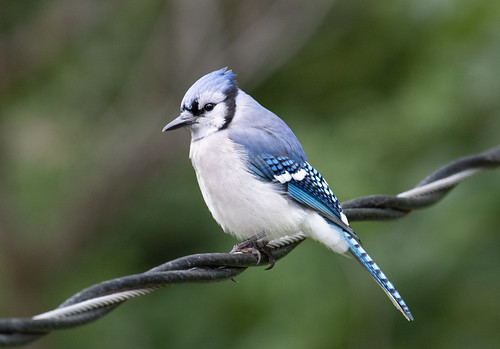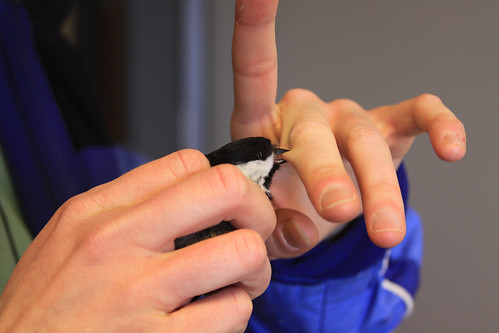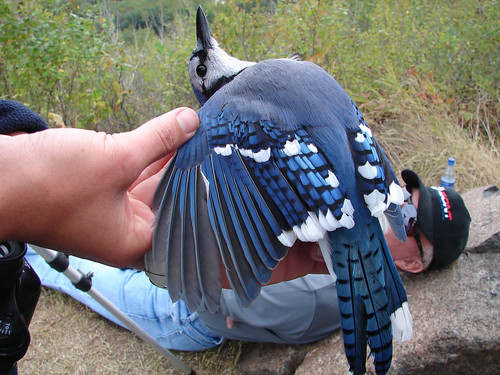(From a For the Birds program originally recorded for December 2, 2009.)
Blue Jays are one of the most conspicuous North American birds. They’re abundant in many habitats throughout the East, and increasingly in the West. And they’re big and brightly colored with a distinctive silhouette thanks to their perky little crest, and they’re noisy as well, so they draw the attention of both eyes and ears. Their omnivorous diet makes them easy to maintain in captivity, so caged Blue Jays have been subjected to many scientific studies over the past two centuries.
It’s fairly easy to trap and band Blue Jays, so scientists have done a lot of field studies on them, too. Bird banders, who hate dealing with cardinals and grosbeaks because of their terrible bite, and chickadees, who pack a wallop, are often surprised to learn that despite their feisty reputation, Blue Jays are shockingly docile in the hand. They surrender the moment they realize they can’t get away.
But it’s extremely hard to capture more than a handful of Blue Jays at one locality—they’re just too smart, and too communicative. So despite their abundance and conspicuousness, our understanding of their breeding biology, demography, and sociality remains poor. But we do know a lot about their basic natural history.
The most in-depth, long-term study of them is probably one conducted at the Archbold Biological Station in Florida. Blue Jays there were color-marked when captured at nets set out to study Florida Scrub-Jays, so records kept on those Blue Jays were serendipity, not focused research. But the scientists learned that among that sedentary group, the basic social unit is a monogamous pair, which remains in the same small area year-round. Pairs do not defend their territory in any classical sense, but they do defend the nest from other jays that come too close. And unlike Florida Scrub-Jays, Blue Jays do not breed cooperatively, but mob predators and intruders, and make social displays as members of a loosely organized neighborhood flock.
Unlike the Florida population, Blue Jays in the Midwest and Northeast are migratory, with thousands counted on single spring and fall days from many good migration vantage points like Hawk Ridge in Duluth. But scientists have never been able to make sense of Blue Jay migration. They know that some individuals are present year-round throughout their range, including the northernmost and southernmost reaches. In autumn, Blue Jays migrating from farther north may replace some jays leaving an area. The distance traveled by migrants is extremely variable, and the proportion that migrates is probably less than 20 percent of the population even in the northernmost parts of their range. Jay movements may be related to acorns and other mast crops but no one has been able to prove this. In other words, Blue Jay migration is one big mystery.
People expend so much brain power wondering about intelligent life on other planets when one of the most intelligent creatures right here on earth continues to baffle us. Blue Jays are excellent mimics, but I bet that if we played musical tones as they did at the end of Close Encounters of the Third Kind, not a single jay would waste its time imitating the tones. They’d be too busy stealing everyone’s lunches.




